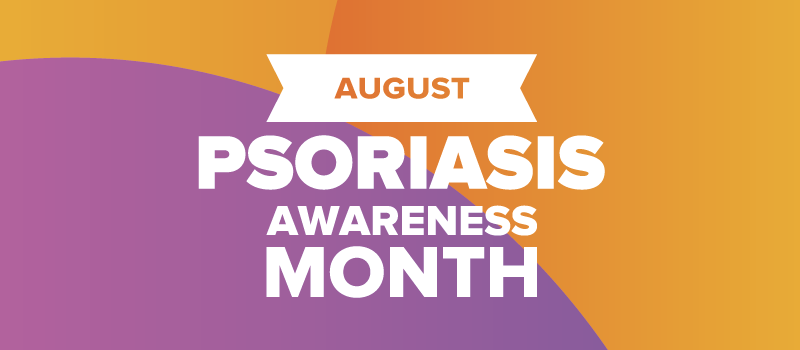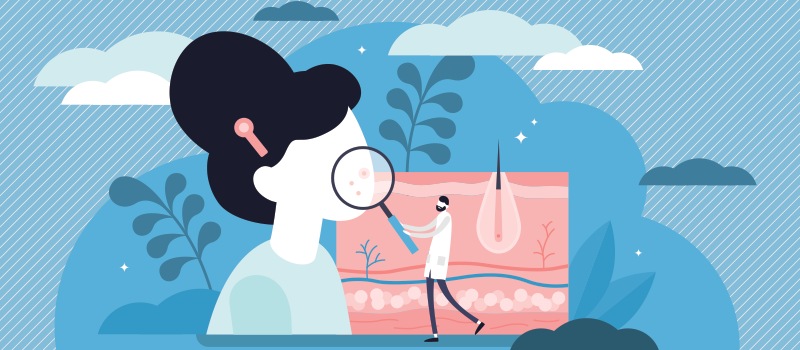What is a Stress Rash? Symptoms, Causes, and Treatments

Everyone has experienced stress at some point in their lives. Because of the brain's powerful effect on the body, it is possible for emotional pressure and anxiety to affect your hormones and immune system and manifest as physical symptoms. Some individuals might notice changes to their skin resulting from frequent or prolonged exposure to stress. In this article, we'll explore what a stress rash is, what it looks like, and the possible treatment options for this skin condition.
What is a stress rash?
As per their name, stress rashes are rashes that develop on the body in response to anxiety, worry, and tension. Many people develop these rashes whenever their stress levels rise.
Fortunately, stress rashes often aren't serious skin conditions. But they could be a good tell-tale sign that your body is under too much stress and pressure, which could lead to more significant health problems in the long run.
What does a stress rash look like?
A stress rash typically appears as raised red bumps on your skin. These discolored, raised bumps are also called hives, wheals, or welts. You might experience swelling and itching. The hives may also bring about a tingling or burning sensation when touched. The size and severity of stress rashes can range from a few small spots to larger welts that form patches covering a wider area of the skin.
Stress rashes can affect any part of the body but most commonly in the following areas:
- Neck
- Chest
- Arms
- Face
The rashes often resolve on their own without any treatment. A single bump can disappear in less than a day, but new lesions may appear as the old ones fade. Stress rashes often clear entirely in less than a few days. So, if your itchy rashes take longer than a few days to subside, it's best to seek medical advice from a healthcare provider or primary care physician.
In some instances, stress can trigger the flare-up of existing skin conditions, such as rosacea, psoriasis, and eczema, which is also called atopic dermatitis. In these instances, the rashes or lesions that appear aren't considered stress rashes, though they can be mistaken as one.
A heat rash can also sometimes be confused with a stress rash. However, heat rashes are caused by the blockage and inflammation of the sweat ducts due to hot and humid weather rather than psychological stress. Contact dermatitis is another skin condition that can lead to rashes. Stress does not cause symptoms of contact dermatitis. Instead, these rashes appear when your skin comes into contact with something you're allergic to, such as soaps or detergents.
What causes a stress rash to develop?
There are various possible causes of hives. Medications, food, and allergens can increase the risk of having these raised bumps on your body. Stress is also one of the environmental triggers of hives. Other factors associated with hives include a lack of quality sleep, insomnia, depression, and anxiety.
Stress can lead to the appearance of rashes as well as flare-ups of an underlying condition that affects the skin. That's because psychological stress can alter your body's immune response.
When under stress, your skin releases inflammatory cytokines, which are signaling molecules secreted by your immune cells to promote inflammation. Apart from inflammation, the chemical and hormonal changes that take place in response to stress might also cause your blood vessels to become dilated and leaky. This may result in swelling, redness, and the appearance of raised bumps on the skin.
How to relieve symptoms of a stress rash
You will not always have to treat a stress rash. Some cases of stress rashes naturally subside on their own, and you may not need to be prescribed medication.
That said, you can also opt for over-the-counter medications to treat symptoms of a heat rash. Antihistamine oral tablets and anti-itch creams can help relieve itchy skin and reduce the discomfort associated with stress rashes. You can purchase any necessary medication online or at your local pharmacy.
Apart from medications, you can reduce itching using at-home natural remedies, such as the following treatments:
- Use a cold compress on the affected regions
- Take an oatmeal or milk bath
- Avoid taking hot baths or showers
- Avoid getting overheated
- Wear loose-fitting and cooling clothing
- Apply a fragrance-free moisturizer to prevent your skin from drying out
- Limit your intake of alcohol and caffeine
- Avoid scratching the affected area
Your symptoms will likely subside within a few days with or without using these treatment options. However, they may reappear when your stress levels rise again.
How to prevent stress rashes
Learning how to manage stress can help prevent recurrences of these skin conditions. While stressful situations are inevitable, we can change how we respond to them.
Some practical ways to minimize and reduce stress in your day-to-day life include the following:
- Prioritize getting enough quality sleep at night
- Try to strike a good work-life balance by drawing healthy boundaries
- Make time for exercise and physical activities
- Explore new creative pursuits, interests, and hobbies
- Consider joining a support group or seeking therapy
It also helps to have a stress-management routine. For example, taking a relaxing shower, performing breathing exercises, or reading your favorite novel could reduce tension. Building a simple self-care routine to carry out each time you face a stressful situation can minimize its impact on your physical, mental, and emotional well-being.
When to see a doctor
Stress rashes aren't a serious condition. However, if the symptoms concern you or if the stress rash takes longer than a few days to clear up or continues to worsen, it's best to seek medical attention from your healthcare professional.
Sometimes, you might need a stronger antihistamine or medication to relieve the itch and irritation. In other cases, your itchy rash might be due to another medical condition rather than stress. Your doctor will be able to determine the actual cause of your symptoms and prescribe other medications based on the diagnosis.
It is considered a medical emergency if your rashes are accompanied by severe illness, trouble breathing, nausea, fever, or signs of low blood pressure, such as lightheadedness and dizziness. If this happens, receive immediate medical attention.
References
- https://www.ncbi.nlm.nih.gov/pmc/articles/PMC6526977/
- https://www.ncbi.nlm.nih.gov/pmc/articles/PMC5885122/
- https://www.clinicaltherapeutics.com/article/S0149-2918(20)30172-7/fulltext
- https://aacijournal.biomedcentral.com/articles/10.1186/s13223-019-0372-z
- https://www.aad.org/public/diseases/a-z/hives-chronic-relief
- https://www.health.harvard.edu/staying-healthy/top-ways-to-reduce-daily-stress
- https://www.nhs.uk/mental-health/self-help/guides-tools-and-activities/tips-to-reduce-stress/












SOCIAL